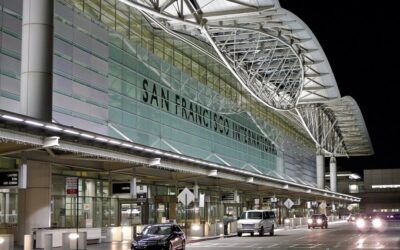Airlines and airports are well into their digital transformation journeys. As systems become increasing interconnected with common interfaces, passenger services are set to improve and become highly personalized and convenient. Check-in and boarding will eventually become completely automated and customer-driven. The challenges ahead are not technical, says Manoj Srivastava a Senior Business Consultant from the Aviation Industry. The real issues are: regulatory policies, security, data and revenue sharing among stakeholders. The key challenge is to bring all the stakeholders in the airport ecosystem on one common IT platform and interface their IT systems together. This issue can be tackled by setting up an international authority to formulate IT and system related polices, says Srivastava.
–Brian Pereira
Q. Can you update us on how airlines and airports have embraced digital technologies to offer new and innovative services?
MANOJ: Airports and Airlines are playing a significant role in the development of a country’s social and economic condition. So it is very important to have common interests and action plans for both entities in the interest of offering travellers better service. Most airports are now adopting international standards and operating in integrated environments. This is especially true for private international airports. There are many systems in the airport. Even airlines that feel they can get by with a customer-centric system, definitely need interfaces with real-time access to passenger information.
Common check-in system (CUTE), self-check-in kiosk (CUSS), FIDS, BIDS, digital signage, electronic boarding gate, PA system — are systems that require direct or indirect interfaces with airline systems.
Take the example of CUTE systems (airport system) which need to interface with Departure Control System or DCS (airline system). Initially, it was very cumbersome and inconvenient for an airline to install DCS at each airport from where it operated. But with the introduction of the CUTE concept, the DCS for all airlines were interfaced or linked with the CUTE systems, irrespective of airline, system or platform.
Now airlines or Ground Handling Agency (GHA) staff can access a particular airlines’ DCS system through a CUTE terminal. The CUTE system also facilitate LDCS (Local Departure Control System) for check-in process for those airlines doesn’t have own DCS system. Today, all the essential IT infrastructure is readily available at the airports, so an airline just needs to plug in their services and pay as they go.
So, technically, commercially and operationally all the necessary services are available at these airports.
Normally, fully functional airports use AODB (Airport Operational Database) systems which directly or indirectly connect with all suppliers and consumers systems inside of the Airport. AODB treated as heart of the Airport system which supplies and captures all necessary data to all stakeholders/department.
Q2. How are airlines and airports making the travel experience more efficient and enjoyable for customers?
MANOJ: Most airlines and airports are closely working and jointly serving the end-customer. Both entities clearly understand the traveller’s requirements. And airports and airlines work closely together to resolve technical issues at all the customer touch points and at the back-end.
Airports are also putting in a lot of effort to reduce check-in and boarding time. Systems are deployed to reduce passenger processing time and to optimize airport capacity. Today the airport is like a small city, with many amenities available for passengers’ convenience and comfort.
Travellers may use their smartphones as boarding passes (all boarding-related information/data will is stored in an app). After Web check-in and self check-in kiosks, airports are also introducing facilities for passengers to weigh, tag and drop their baggage at baggage drop counter. In the near future, air travellers will not need to meet any agent at the airport, and check-in and even boarding will be a completely automated affair.
Q3. What do you see as the key challenges in this digital transformation and how can these be tackled?
MANOJ: That is a very good question. Most people assume there may be technical challenges/hindrances to connect them, but frankly, there are no major technical challenges to interface airlines and airport systems. However, the real issues are: regulatory policies, security, data and revenue sharing among stakeholders. There are many stakeholders who operate from the airport, but none of them are governed by the airport authority. ATC, Immigration, security, airlines are major tenants of the airport, but none of them are bound to follow common IT policy lead by airport. So the key challenge is to bring them all on one common IT platform and interface their IT systems together.
This issue can be easily tackled by setting up an international authority to formulate IT and system related polices. FAA, ICAO, IATA are there to formulate the aviation related policies. There’s Standard Operating Procedures (SOPs) at an international level. So every airline and airport needs to comply. Likewise, when it comes to sharing common IT infrastructure and interfacing applications across the industry, we must have an independent authority (each stakeholder’s IT representative should be member of the authority). The authority will decide what kind of IT infrastructure is required, and if the application needs an interface for passenger convenience.
Q4. We see that legacy systems aren’t going to be replaced so soon, and are still very much in operation. But how are airlines interfacing these with modern, digital platforms?
MANOJ: I have observed that many airlines (including some major ones) continue to struggle with TPF-based (Transaction Processing Facility – Mainframe computer based) reservation systems. But service providers are helping them to connect via middleware. As far as web-based passenger-service-systems (PSS) are concerned, they are using new open source technology and sharing passenger information across the platform.
Editor’s note: The benefit of sharing passenger profiles is that airlines in alliances like OneWorld and Star Alliance will have access to passenger preferences, frequent flier details etc, and can offer premium services to eligible travellers. For instance, one airline will know that a passenger is a frequent business class flier of another airline in that airline alliance. It can then offer that passenger its premium services. Also, frequent flier miles can be transferred across airlines flown by that passenger.
Q. What’s the future of air travel going to be like for passengers?
MANOJ: I personally feel that future air travel will be more easy, convenient, personalised, and economical for passengers. A passenger would feel like he/she is travelling on a chartered flight with a hired pilot!
This would be possible when we have standardization of regulations across the country. With new technology and more interfacing of user applications across the industry, all the ecosystem players will be tightly integrated. So airports and airlines will be able to offer customers highly personalised and exclusive services.
In future, a passenger may not need to plan travel much in advance. All the planning and reservations will be done from his/her smart phone. Using apps, a customer will access services such as flight booking, flight alert, mobile check-in, self-boarding, baggage identification (read QR code), taxi, customer care/feedback etc. In fact, many of these services are already being accessed through airline apps.
—————————————————————————————————————-
PROFILE
 Manoj Srivastava is a Senior Business Consultant in the Aviation Industry. He has over 20 years of industry experience having evaluated and implemented industry best, economical and customer centric applications, right from PSS, DCS, CRM, IBE to the industry’s most critical applications like MRO.
Manoj Srivastava is a Senior Business Consultant in the Aviation Industry. He has over 20 years of industry experience having evaluated and implemented industry best, economical and customer centric applications, right from PSS, DCS, CRM, IBE to the industry’s most critical applications like MRO.
He has contributed significantly towards building an application for a frequent Flyer Program of a major airline. He also played a key role in the selection of aircraft, airfare, pricing, inventory and revenue management and decision support system etc.
Apart from that, he has done end-to-end project management of implementing an airline PSS and commercial application, infrastructure management, vendors, internal & external customer management.
—————————————————————————————————————
This interview is exclusive to DigitalCreed and may NOT be republished without the explicit permission of this Editor. For article syndication enquiries, write to brian9p [at] gmail [dot] com.








